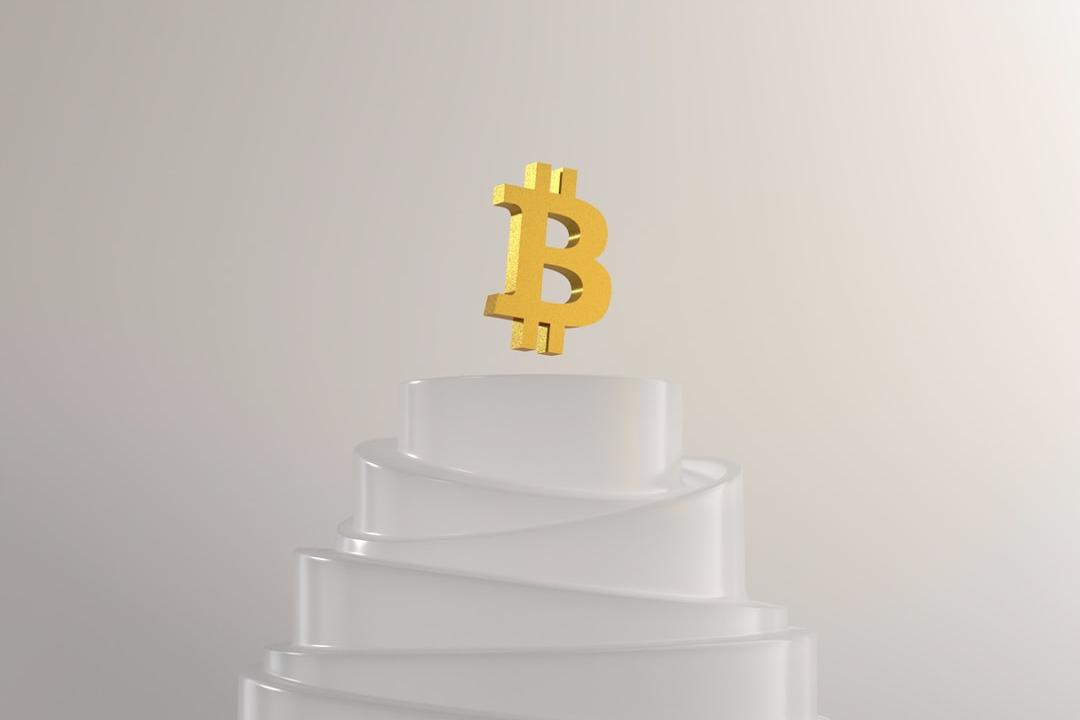Keep — It — Simple — Stupid = KISS
Many readers often forget the KISS principle when dealing with the onslaught of policies from the administration of U.S. President Donald Trump.
Trump’s media strategy aims to make you wake up every day saying to your friends, partners, or inner monologue, “My God, did you see what Trump/Musk/Little Kennedy did yesterday? I can’t believe they did that.” Whether you’re feeling exhilarated or depressed, this farce known as “The Emperor’s Days” is quite entertaining.
For investors, this continuous state of excitement is detrimental to accumulating Bitcoin (sats). You might buy in today and then quickly sell out tomorrow after digesting the next headline. The market constantly oscillates during this process, and your Bitcoin reserves shrink rapidly.
Remember the KISS principle.
Who is Trump? Trump is a master performer in real estate. To succeed in real estate, you must master the art of borrowing vast sums of money at the lowest possible interest rates. Then, to sell units or lease spaces, you must brag about how impressive new buildings or development projects will be. I am not interested in Trump’s ability to elicit sympathy in global society, but I am interested in his ability to finance policy objectives.
I am convinced that Trump wants to achieve his “America First” policy through debt financing. If not, he would allow the market to naturally clear the embedded credit from the system, ushering in a depression worse than that of the 1930s. Does Trump want to be known as the Herbert Hoover of the 21st century, or as Franklin Delano Roosevelt (FDR)? American history diminishes Hoover because historians believe he didn’t print money quickly enough, while it venerates Roosevelt for his New Deal policies funded by printing money. I believe Trump wishes to be regarded as the greatest president in history, thus he does not want to destroy the foundations of the empire through austerity.
To emphasize this point, recall the words of Andrew Mellon, Hoover’s Secretary of the Treasury, regarding how to address the over-leveraged American and global economy after the stock market crash:
“Liquidate labor, liquidate stocks, liquidate farmers, liquidate real estate. It will purge the system of its ills. High costs of living and the luxuries of life will disappear. People will work harder, lead more moral lives. Values will be adjusted, and those with initiative will pick up the wreckage from those who are less capable.”
Current U.S. Treasury Secretary Scott Bessent would not speak so boldly.
If my viewpoint is correct, that Trump will achieve “America First” through debt financing, what implications does this have for my future outlook on global risk asset markets, particularly cryptocurrency?
To answer this question, I must form an opinion on how Trump might increase the quantity of money/credit (i.e., print money) and reduce its price (i.e., interest rates). Thus, I need to have a perspective on how the relationship between the U.S. Treasury, led by Scott Bessent, and the Federal Reserve, led by Jerome Powell, will evolve.
KISS Principle
For whom do Bessent and Powell serve? Is it the same person?
Bessent was appointed by Trump 2.0, and from his past and present interviews, he aligns closely with the worldview of this “Emperor.”
Powell was appointed by Trump 1.0, but he is a capricious traitor who has defected to the Obama and Clinton camps. Powell destroyed what little credibility he had left when he significantly cut rates by 0.5% in September 2024. At that time, U.S. economic growth was above trend levels, and inflationary pressures were still present, making rate cuts unnecessary.
However, the Obama-Clinton puppet Kamala Harris needed a boost, and Powell dutifully lowered rates. The results did not pan out as expected, but after Trump’s victory, Powell announced he would complete his term and once again firmly resist inflation.
When you carry substantial debt, several things happen.
First, interest payments consume most of your free cash flow. Secondly, you cannot secure financing for additional asset purchases because, given the high debt levels, no one will lend you money. Thus, you must restructure your debt, which requires extending maturity dates and lowering coupon rates. This is a form of soft default, as it mathematically reduces the present value of the debt burden. Once your effective debt burden is lowered, you can borrow again at affordable rates. Viewed from this perspective, both the Treasury and the Federal Reserve play roles in restoring the financial health of the U.S. However, the success of this effort is hampered because Bessent and Powell serve different masters.
Debt Restructuring
Bessent has publicly stated that the current structure of U.S. debt must change. He hopes to ultimately extend the average maturity of the debt burden, which is referred to on Wall Street as “debt maturity extension.” Various macroeconomic experts have suggested ways to achieve this goal; I have discussed such solutions in detail in The Genie. However, for investors, the most important aspect is that the U.S. will pursue a soft default on its debt burden by lowering its net present value.
Given the global distribution of U.S. debt holders, achieving this restructuring will take time. It is a geopolitical “Gordian Knot.” Therefore, in the short term, i.e., the next three to six months, this does not concern our cryptocurrency inventors.
New Loans
Powell and the Federal Reserve have extensive control over the quantity of credit and its price. The law allows the Federal Reserve to print money to purchase debt securities, thereby increasing the quantity of money/credit, i.e., printing money. The Federal Reserve also sets short-term interest rates. Since the U.S. cannot default in nominal dollars, the Federal Reserve determines the risk-free rate of the dollar, which is the effective federal funds rate (EFFR).
The Federal Reserve has four primary levers to manipulate short-term interest rates: the reverse repurchase agreement (RRP), the interest on reserves balance (IORB), the lower bound of the federal funds rate, and the upper bound of the federal funds rate. Without delving into the complexities of the money market, we need only understand that the Federal Reserve can unilaterally increase the quantity of dollars and lower its price.
If Bessent and Powell serve the same Leader, then analyzing the future path of dollar liquidity and how China, Japan, and the European Union will respond to U.S. monetary policy would be very straightforward. Given that they clearly do not serve the same person, I wonder how Trump can manipulate Powell to print money and lower rates while allowing Powell to maintain the Fed’s anti-inflation mission.
Wrecking the Economy
The Federal Reserve-Recession Law: If the U.S. economy enters a recession, or if the Federal Reserve is concerned that the U.S. economy will enter a recession, it will lower interest rates and/or print money.
Let us examine this law using recent economic history (thanks to Bianco Research for this excellent table).

This is a direct cause list of modern American economic recessions post-World War II. A recession is defined as a quarter-on-quarter GDP growth that is negative. I will focus on the period from the 1980s to the present.

This is a chart of the lower bound of the federal funds rate. Each red arrow represents the beginning of a loosening cycle that coincided with a recession. As you can see, it is very clear that the Federal Reserve will lower rates at least during a recession.
Fundamentally, “Pax Americana” and its governing global economy are financed by debt. Large corporations fund expansions of future production and current operations through bond issuance. If cash flow growth slows significantly or declines entirely, the repayment of that debt will ultimately come into question.
This is problematic because corporate debt largely constitutes bank assets. The corporate debt held by banks supports their customers’ deposit liabilities. In simple terms, if the debt cannot be repaid, it will call into question the “value” of all existing legal tender bank notes.
Additionally, in the U.S., most households are leveraged. Their consumption patterns are marginally financed by mortgages, auto loans, and personal loans. If their cash flow generation ability slows or declines, they will be unable to meet their debt obligations. Similarly, the banking system holds these debts and supports their deposit liabilities.
It is crucial that the Federal Reserve cannot allow mass defaults or an increased likelihood of corporate and/or household debt defaults to occur during a recession or before cash flow generation slows or contracts. This would lead to corporate and consumer debt defaults, resulting in systemic financial distress. To protect the solvency of the debt-financed economy, the Federal Reserve actively or passively lowers rates and prints money whenever a recession occurs or perceptions of recession risk heighten.
KISS Principle
Trump manipulates Powell into easing the financial environment by triggering a recession or making the market believe a recession is imminent.
To avoid a financial crisis, Powell will subsequently take some or all of the following measures: lower rates, end quantitative tightening (QT), restart quantitative easing (QE), and/or suspend the supplementary leverage ratio (SLR) that banks use to purchase U.S. government bonds.
Here is an image from DOGE:

How does Trump unilaterally trigger a recession?
The marginal driver of U.S. economic growth has always been the government itself. Whether the spending is fraudulent or necessary, government spending creates economic activity. Moreover, government spending has a monetary multiplier effect. This is why the Washington D.C. metropolitan area is one of the richest regions in the U.S., as there are many professional parasites feeding off the government. It is difficult to directly estimate the exact monetary multiplier, but conceptually, it is easy to understand that government spending has follow-on effects.
According to data from Perplexity:
The median household income in Washington D.C. is $122,246, far exceeding the national median household income.
This places Washington D.C. in the 96th percentile of U.S. metropolitan areas by household income.
As a former president, Trump is well aware of the extent of fraud, waste, and abuse within the government. Both parties’ establishments do not want to curb this situation, as everyone benefits from it. Given that Trumpists are outsiders to both the Democratic and Republican parties, they are unhesitating to expose the flaws in government spending plans. Establishing a consulting committee led by Elon Musk, backed by Trump, named the “Department of Government Efficiency (DOGE),” is the core driving force behind rapidly cutting government spending.
How does DOGE achieve this when many of the largest expenditure items are non-discretionary? If payments are fraudulent, they can be halted. If computers can replace government employees managing these projects, human resource costs will plummet. The question becomes,How much fraud and inefficiency is there in government spending each year? If DOGE and Trump are to be believed, the annual amount could reach trillions of dollars.
One potentially glaring example is the Social Security Administration (SSA) and who it sends checks to. If we trust DOGE’s claims, the department is issuing nearly a trillion dollars to deceased individuals and people whose identities have not been properly verified. I do not know the veracity of such claims.
But imagine you are a SSA benefits fraudster, and you know that Elon and the “big guys” are delving into the data, possibly discovering the fraudulent payments you’ve received over the years and submitting them to the Department of Justice. Do you continue your scheme or flee? The key point is that the mere threat of discovery could lead to a reduction in fraudulent activities. As the old saying goes in China, “kill the chicken to scare the monkey.” Therefore, while the establishment media may be trying to scare Elon and DOGE, I believe that even if it is not a trillion dollars, there are still hundreds of billions.
Next, let’s talk about the human resources aspect of the government spending equation. Trump and DOGE are laying off hundreds of thousands of government employees. Whether unions have enough power to legally challenge the mass purging of “useless” government workers remains to be seen. But the consequences are already manifesting.
DeAntonio explains, “The layoffs we have seen so far may only be the tip of the iceberg. The scale and timing of future layoffs will determine whether the labor market can remain stable. We currently estimate that, due to ongoing hiring freezes, delayed resignations, and layoffs initiated by DOGE, the number of federal government employees will decrease by about 400,000 by 2025.” – Fox Business
Even though Trump 2.0’s presidential term has just begun a little over a month ago, the impact of DOGE is apparent. The number of unemployment benefit applicants in the Washington D.C. area has surged. Housing prices have plummeted. And consumer discretionary spending, which can arguably be driven by massive fraud and abuse by the U.S. government, has disappointed financial analysts’ forecasts. The market has begun to talk about the word “recession.”
A new analysis by the real estate trading platform Parcl Labs shows that Washington D.C. has seen an 11% decline in housing prices since the beginning of this year, tracking the impact of the Department of Government Efficiency (DOGE) on the city’s real estate market. – Newsweek
Rothstein posted on Bluesky that due to the massive layoffs in government departments and the sudden cancellation of federal contracts, the U.S. is almost certain to head towards a severe economic contraction. – The Economic Times
The word “recession” is an economic disgrace. Powell does not want to become a modern-day Hester Prynne (and face public shame and condemnation), so he must respond.
Powell’s Turn Again
How many times has Powell turned since 2018? He must certainly feel dizzy. The question for investors is whether Powell will act preemptively to save the financial system from collapse or wait until a major financial institution has gone bankrupt before reacting. The path Powell chooses is purely political. Therefore, I cannot predict.
But what I do know is that there is $20.8 trillion in U.S. corporate debt and $10 trillion in U.S. national debt that must be rolled over this year. If the U.S. is on the brink of recession or in recession, the cash flow impact will make it nearly impossible to roll over these massive bonds at current interest rate levels. Therefore, to maintain the sanctity of the “American Peace” financial system, the Federal Reserve must and will take action.
For us cryptocurrency investors, the question is how quickly and on what scale the U.S. will release credit? Let’s break down the four main measures the Federal Reserve will take to turn the tide.
Interest Rate Cuts
It is estimated that for every 0.25% decrease in the federal funds rate, it equates to $100 billion in quantitative easing or money printing. Assume the Federal Reserve lowers interest rates from 4.25% to 0%.
This amounts to $1.7 trillion in quantitative easing. Powell may not lower rates to 0%, but you can be sure Trump will allow Elon to continue cutting spending until Powell brings rates down to an ideal level. Once an acceptable interest rate level is reached, Trump will rein in his “mad dog.”
Stopping Quantitative Tightening (QT)
The recently released minutes from the Federal Reserve’s January 2025 meeting detail that some committee members believe quantitative tightening must end at some point in 2025. Quantitative tightening is the process by which the Federal Reserve reduces the size of its balance sheet, thereby decreasing the amount of dollar credit. The Federal Reserve is currently conducting $60 billion in quantitative tightening per month. If the Federal Reserve starts taking action in April, stopping quantitative tightening will inject $540 billion in liquidity by 2025 compared to previous expectations.
Restarting Quantitative Easing (QE) / Supplementary Leverage Ratio (SLR) Exemption
To absorb the supply of U.S. government bonds, the Federal Reserve can restart quantitative easing and grant banks supplementary leverage ratio exemptions. Through quantitative easing, the Federal Reserve can print money and purchase government bonds, thus increasing the amount of credit. The supplementary leverage ratio exemption allows U.S. commercial banks to use infinite leverage to purchase government bonds, thereby increasing the amount of credit.
The key here is that both the Federal Reserve and the commercial banking system are allowed to create money out of thin air. Restarting quantitative easing and granting supplementary leverage ratio exemptions are decisions that only the Federal Reserve can make.
If the federal deficit remains in the range of $1 trillion to $2 trillion annually, and if the Federal Reserve or banks absorb half of the new issuance, it means that the annual money supply will increase by $500 billion to $1 trillion. A 50% participation rate is conservative given that during COVID-19, the Federal Reserve purchased 40% of new issuances. Nevertheless, by 2025, large exporting countries (China) or oil-producing countries (Saudi Arabia) may have halted or significantly slowed their purchases of government bonds with dollar surpluses; thus, the Federal Reserve and banks have more room to maneuver.
Let’s do some calculations:
Interest Rate Cuts: $1.7 trillion
+
Stopping Quantitative Tightening: $0.54 trillion
+
Restarting Quantitative Easing / Supplementary Leverage Ratio Exemption: $500 billion to $1 trillion
=
Total = $2.74 trillion to $3.24 trillion
COVID-19 vs. DOGE Money Printing
In the U.S. alone, the Federal Reserve and the Treasury created approximately $4 trillion in credit between 2020 and 2022 to respond to the COVID-19 pandemic.
DOGE-inspired money printing could reach 70% to 80% of the scale of the COVID-19 pandemic.
Given that the U.S. printed $4 trillion, Bitcoin surged approximately 24 times from its low in 2020 to its high in 2021. Considering Bitcoin’s market cap is now much larger than it was back then, let’s be conservative and label the increase from the $3.24 trillion printed solely in the U.S. as tenfold. For those asking how Bitcoin could reach $1 million during Trump’s presidency, this is the answer.
Several Key Assumptions
Even though the current market is a wreck, I still paint a very bright future for Bitcoin. Let’s look at my assumptions so that readers can judge for themselves whether these assumptions are reasonable.
Trump will finance “America First” through debt.
Trump is using DOGE as a means to clear out political opponents addicted to fraudulent income sources, cut government spending, and increase the likelihood of a recession triggered by a slowdown in U.S. government spending.
The Federal Reserve will implement a series of policies before or after a recession to increase the money supply and lower the cost of money.
Based on your worldview, it is up to you to decide if this is reasonable.
U.S. Strategic Reserves
Waking up Monday morning, I saw Trump’s market initiative kick off. On Truth Social, Trump reiterated that the U.S. would establish a strategic reserve filled with Bitcoin and a bunch of junk coins. The market surged significantly due to the “news.” This is nothing new, but the market viewed Trump’s reaffirmation of his cryptocurrency policy intentions as an excuse for a violent dead cat bounce.
For this reserve to have a positive impact on prices, the U.S. government needs to have the capability to actually purchase these cryptocurrencies. There aren’t secret piles of dollars waiting to be deployed. Trump needs the help of Republican lawmakers to raise the debt ceiling and/or revalue gold to match current market prices.
These are the only two ways to fund a strategic reserve for cryptocurrencies. I’m not saying Trump won’t keep his promises, but the timeframe for purchases to potentially begin may be longer than leveraged traders can withstand before liquidation. Therefore, it’s wise to reduce positions on the highs.
Trading Strategy
Bitcoin and the broader cryptocurrency market represent the only truly global free market that exists. The price of Bitcoin instantaneously communicates to the world how global society views the current state of fiat currency liquidity.
Bitcoin hit a high of $110,000 just before Trump’s coronation in mid-January and reached a local low of $78,000, down about 30%. Bitcoin is screaming that a liquidity crisis is imminent, even as U.S. stock indices remain close to historical highs. I believe the signals from Bitcoin; therefore, a severe correction in the U.S. stock market, driven by recession fears, is on the horizon.
If Bitcoin leads the market down, it will also lead it up. Given that even minor financial turmoil can swiftly spiral into widespread panic due to the enormous leverage embedded in the system, if my predictions are overall correct, we won’t have to wait long for the Federal Reserve to take action. Bitcoin will drop to the bottom first and then rebound ahead of the pack.
As for the rotten traditional financial system led by U.S. stocks, it will lag behind before it starts to rise but will have to undergo a significant drop first.
I firmly believe we are still in a bull market cycle; therefore, at worst, the bottom will be the previous cycle’s historical high of $70,000. I’m not sure if we will drop that low. A positive signal for dollar liquidity is that the U.S. Treasury’s general account is declining, which serves to inject liquidity.
Based on my confidence in Trump as a financier type and his ultimate goals, when Bitcoin trades in the $80,000 to $90,000 range, Maelstrom increases its risk exposure. If the current situation is merely a “dead cat bounce” (a brief rebound before continuing to fall), I expect Bitcoin may revisit lows around $80,000.
If the S&P 500 or the Nasdaq 100 index drops 20% to 30% from historical highs, along with a major financial institution nearing collapse, we may witness a synchronized downturn in global markets.
This means all risk assets will suffer simultaneously, and Bitcoin could drop below $80,000 again, even probing the $70,000 mark. Regardless of what happens, we will cautiously build positions during declines, without using leverage, in anticipation of a resurgence of global (especially U.S.-led) fiat financial markets after the eventual collapse, pushing Bitcoin to $1 million or even higher!
This article is collaboratively republished from: Deep Tide.

